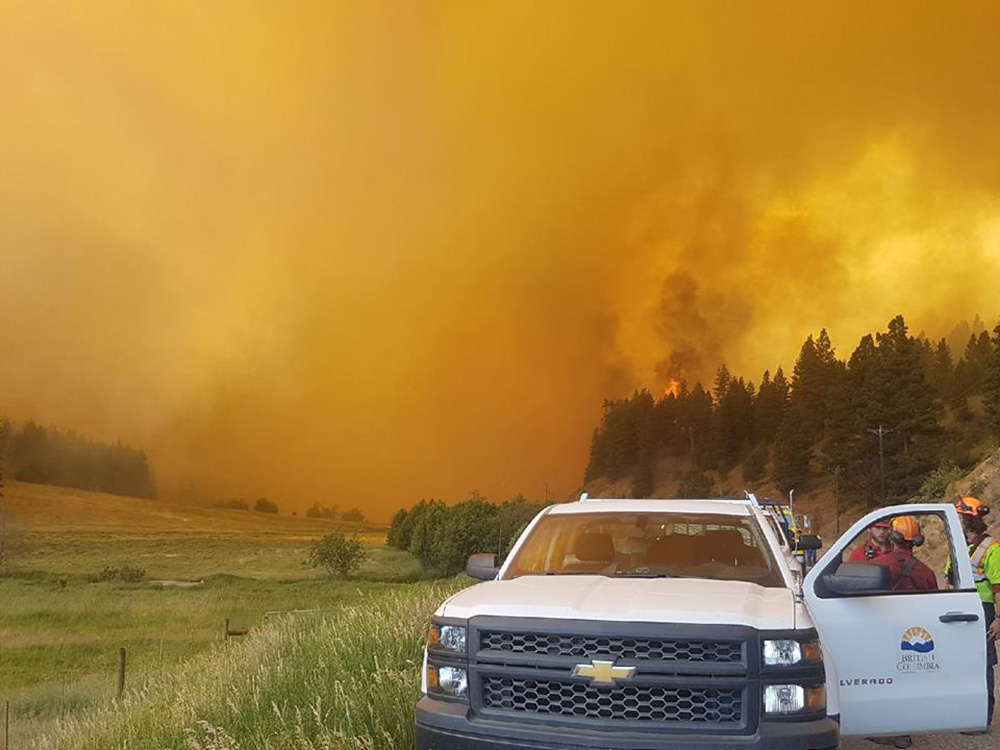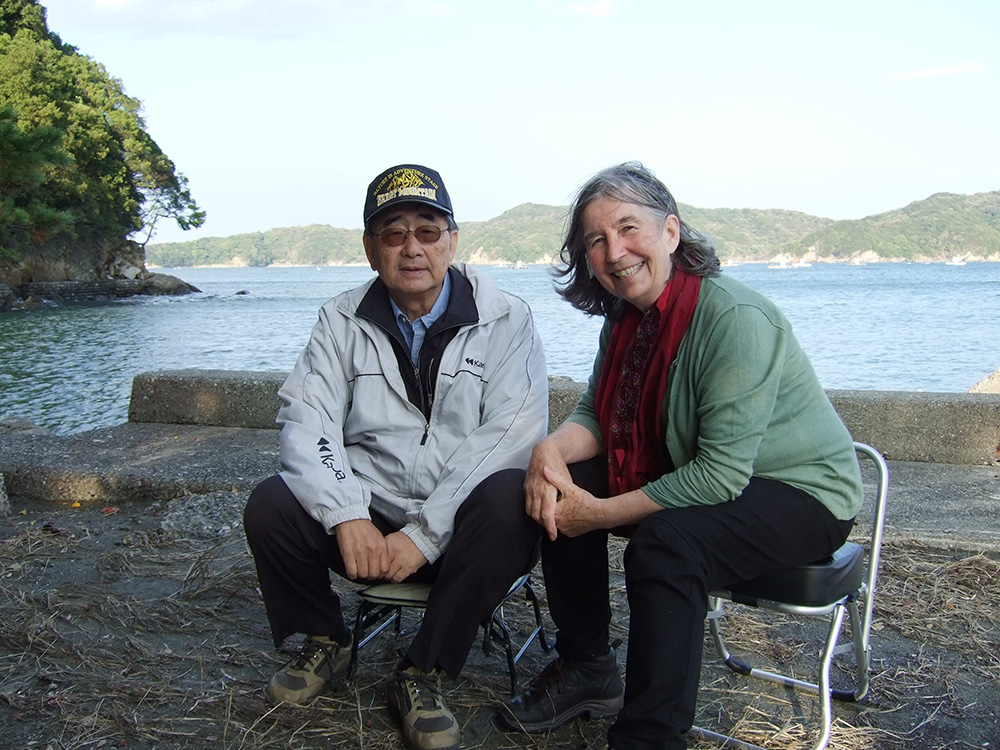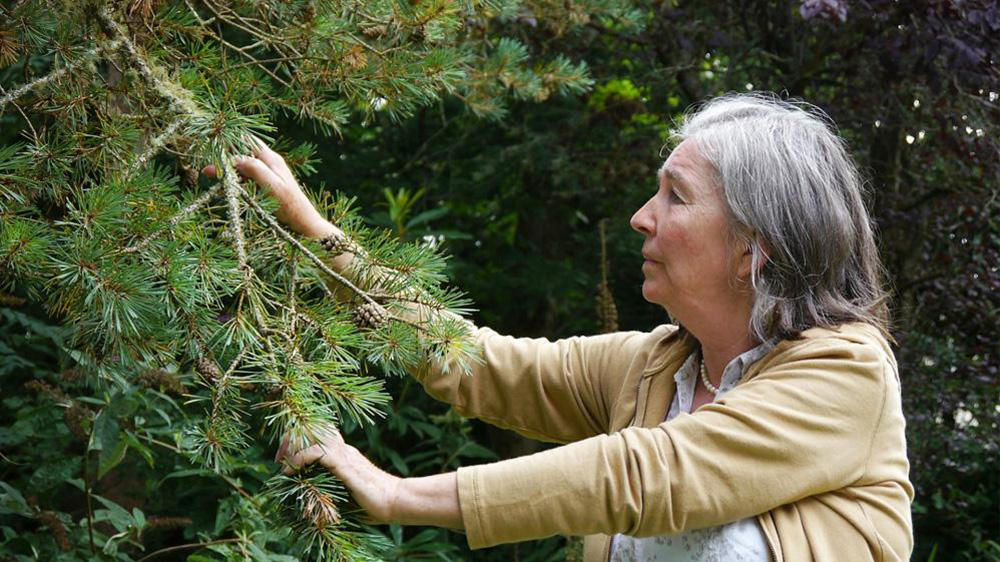I have called up Diana Beresford-Kroeger, the famed Irish botanist and bestselling author, to ask about the megafires that carpeted much of North America in dense smoke last summer.
In British Columbia alone, wildfires released between 150 and 200 megatonnes of carbon dioxide in 2017. That’s more than twice the volume created by human activities in the province.
Beresford-Kroeger, who calls herself a renegade scientist, has been studying forests all her life and is one of the world’s leading experts on the many medicinal properties of trees.
Coming from a strong Celtic tradition, the 74-year-old plain speaker delivers a good dose of traditional knowledge with her science, combining data with old-fashioned wisdom.
The global forest, which keeps the atmosphere rich in oxygen and low in carbon dioxide, “forecasts our future in every breath it takes and every seed it releases into the leaf mold of the forest floor,” she has written.
On the day when I reach her to discuss the megafires that consumed parts of California, Chile, Sweden and B.C. last summer, she says she has both good and terrifying news.
But first Beresford-Kroeger tells me she has just walked into her house just south of Ottawa from her research garden, where native and endangered trees thrive, and is covered in mud.
“You should know,” she begins with a laugh, “that you are talking to a dirty woman.”
And then she plunges into the subject of wildfires, which burned almost 3.4 million hectares of forest last year across Canada — a nearly threefold increase over 2016.
Fires foretold
The first point Beresford-Kroeger wants to make is that the fires consuming places like California and B.C.’s Interior were foretold by Indigenous people thousands of years ago.
The Anishinaabe predicted an age of fire back in the 13th century, as did seers among the Celts, a woodland people whose alphabet was based on trees.
These prophets “could see the patterns of things in nature and could see how people were behaving,” she says, and they predicted that greed or the relentless consumption of things would lead to conflagrations of enormous proportions.
White people banished fire, a natural player on the landscape, she says. But Indigenous people used fire. “They had a brainchild and architecturally changed the continent by fire.”
The Woodland Cree set fires in meadows and along shorelines to produce more berries and provide more grass for game, just as the Cahokia people set fires to help nourish the nut trees that grew on the great North American savannah, which extended into present-day Toronto.
Flash fires in April and November produced ash that helped to fertilize the grasses and the forest. The ash even protected trees from fungal spores.
“And it doubled the production of fruits and nuts in the forest,” says Beresford-Kroeger. The fertilizing effect of controlled burns increased certain kinds of vegetation a hundred-fold and enlarged the population of deer, elk and moose.
“That was their strategy and they knew what they were doing.”
But the careful firing of parts of the continent was abandoned long ago as colonial governments demonized fire and made it their duty to pounce on any flame, a practice that has allowed many forests to grow more dense, uniform and flammable.
Human communities are now paying a price for 100 years of fire suppression as they built more homes in landscapes designed to renew themselves with pests or fire.
Other changes account for the rise and intensity of wildfires, which Beresford-Kroeger describes as nature’s very own “chemical factories.”
“We have drier air in the spring,” she says. The dry air desiccates pollen tubes. As a result evergreens produce more oleoresins, which can fuel fires. “The more oleoresin, the greater the fire load.”

Even deciduous trees make more resins in their leaves to fight being radiated in the sun as the climate gets drier and warmer.
“The trees are trying to fight climate change on their own and it makes them more dangerous,” explains Beresford-Kroeger. “What has happened is that we have not paid attention to climate change and the changes around us.”
The spread of invasive trees and grasses has also fanned wildfires around the globe.
In South Africa, for example, some of the region’s worst wildfires ripped through commercial non-native pine plantations in 2017, killing eight people and destroying 800 buildings.
The pines provided more flammable material and burned more intensely than native bush, making the fires difficult to control.
The same folly has been repeated elsewhere including Chile and Portugal.
The eucalyptus was introduced from Australia to North America and Europe, Beresford-Kroeger notes. It’s “a marvellous tree,” she says.
“But when it sheds its bark, which is full of resin, it’s like bombs going off everywhere. If anyone throws a cigarette out of a car, you can expect a bomb-like situation,” explains the botanist.
That very situation killed people in California wildfires in the 1990s and during Portugal’s deadliest-ever wildfire last year.
The Portugal inferno, which largely raged through eucalyptus plantations, roasted more than 60 fleeing citizens in their cars.
Portugal, one of the most heavily forested countries in Europe, used to be carpeted with native cork oak and laurel trees, which are largely resistant to fire.
But in recent years the pulp industry took advantage of dying farming communities and encouraged eucalyptus plantations on private land to boost pulp exports.
The industry valued eucalyptus because it’s one of the world’s fastest-growing trees. But the tree’s sap is flammable, and its burning bark can fly off and ignite a fire 100 metres away. The invasive tree also burns faster and hotter than any oak or laurel.
“We are contributing to climate change by planting these trees,” says Beresford-Kroeger.
Cracking branches become kindling
Another curious thing is happening in the boreal forest. Because of changes in precipitation patterns brought about by climate change there have been more ice and wet snowstorms in the great forest.
“The greenhouse effect combined with a loss of forests is adding extra moisture to the atmosphere,” says Beresford-Kroeger.
For many forests that means more ice, torrential rains or heavy snow in the spring and fall.
“The trees have socket joints and the heavy snow knocks off the branches just at the socket,” says the scientist. “The branches just add more fuel to the fire. That will be a problem in the north in the boreal.”
Calgary, for example, had an early snowstorm in September three years ago before the city’s deciduous trees had even shed their leaves.
All night, citizens could hear the cracking of branches as tons of biomass from tens of thousands of spruce trees and cottonwoods crashed onto streets and homes.
Disappearing fish
Then comes the terrifying story of forests, fish and the world’s new megafires.
Years ago a brilliant Japanese marine chemist Katsuhiko Matsunaga decided to see if there was any scientific truth behind an old Japanese adage: “If you want to catch a fish, plant a tree.”
Matsunaga discovered a fascinating chemical tale behind the ancestral lore, says Beresford-Kroeger.

Decomposing leaves are full of fulvic acid, just one of many humic acids that enrich the soil. The compound is capable of binding with iron in the soil, explains the botanist.
“The earth is rich in iron, but the oceans are poor,” she adds.
Decomposing leaves in forested watersheds help to flush iron into the ocean, where it acts as a catalyst for the building of phytoplankton.
Without a supply of oxygenated iron, phytoplankton can’t perform photosynthesis and make the rich food that all marine life depends on.
Great wildfires and logging reduce the leaf litter and therefore the amount of iron that flushes into the ocean, which, in turn, reduces the plankton.
With no food the fish disappear.
“That’s what the great fires are doing. The fisherman can’t expect to catch more fish. It is a terrifying story.”
In northern Japan the felling of great deciduous forests in the past have resulted in precipitous declines in fish and oyster populations.
“When forests disappear, the sea dies,” Matsunaga wrote.
Science is providing more evidence about the primal importance of forests for all of life on the planet, says Beresford-Kroger.
The good news, she adds, is that more and more young people want governments to address the issues of climate change and overconsumption.
They also want to see damaged forests restored to their original biodiversity, and native and ancient forests better protected from industrial intrusions.
“But we need leadership and people with brains.”
She also proposes “SWAT teams” of trained firefighters to engage wildfires that threaten critical watersheds and fisheries.
“We need it and we need it now.”
Beresford-Kroger worries that the new plague of hotter and larger wildfires will not only reduce oxygen in the atmosphere, but also release millions of tons of carbon dioxide, the driver of climate disruption.
“At some point the release of CO2 from wildfires is going to start a chemical chain reaction triggering a release of greenhouse gases from the northern benthic areas. This is something we do not understand.”
She pauses for a moment.
“Our children deserve a future, and that’s my basic thinking. “
The smoke from global forests, she adds, is sending a profound message, but the destruction is not yet a destiny.
“We don’t know the future of the forest. It is an extra skin on the planet that harvests the sun’s rays.”
Diana Beresford-Kroeger will deliver the ninth Haig Brown Lecture on “The Medicine of Trees” on Nov. 1 at the Tidemark Theatre in Campbell River. There will also be a showing of Call of the Forest about her life’s work advocating for the protection of the globe’s forests. Tickets are available here. ![]()
Read more: Environment
















Tyee Commenting Guidelines
Comments that violate guidelines risk being deleted, and violations may result in a temporary or permanent user ban. Maintain the spirit of good conversation to stay in the discussion.
*Please note The Tyee is not a forum for spreading misinformation about COVID-19, denying its existence or minimizing its risk to public health.
Do:
Do not: